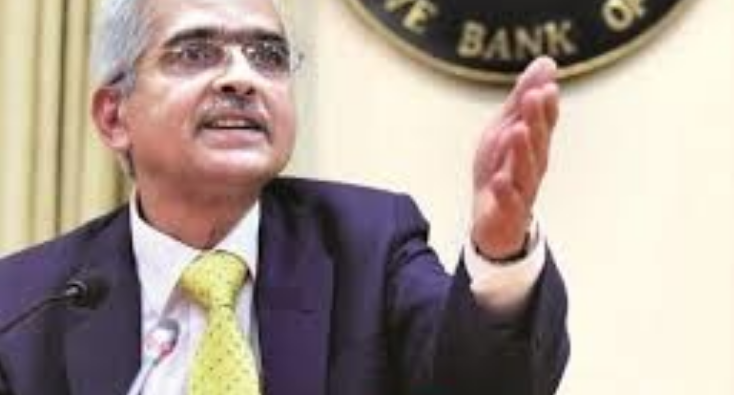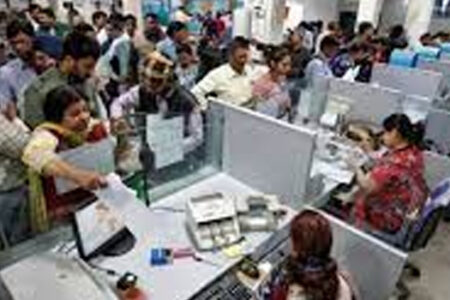Today, if we take a poll of Indian industrialists on their expectations from the Reserve Bank of India’s (RBI’s) last bi-monthly policy for the 2019 fiscal year, 10 out of 10 will pitch for a rate cut. They are also rooting for a cut in the banks’ cash reserve ratio (CRR) — or the portion of deposits kept with the RBI — to release money into the system.
Indisposed finance minister Arun Jaitley too has asked for a rate cut, albeit indirectly — saying, India cannot have a real rate of interest that’s higher than anywhere else in the world.
The chorus for the cut has grown ever since the retail inflation data for December 2018 was released. Retail inflation in December dropped to its 18-month low of 2.19 per cent, lower than what most analysts had expected, driven by continued deflation in food prices (-2.5 per cent). Since July 2018, retail inflation has been on a slide.
The RBI is committed to achieve a medium-term target of 4 per cent retail inflation on a durable basis within a band of plus or minus 2 per cent, while supporting growth. In its December monetary policy review, the Monetary Policy Committee (MPC), Indian central bank’s rate-setting body, projected 2.7-3.2 per cent inflation in the second half of 2019 and 3.8-4.2 per cent in the first half of 2020 (with upside risks). The projection was revised downward after RBI’s earlier estimate undershot the actual data.
Even the December inflation projections for the second half of the current fiscal year as well as the first half of the next year could be high. This and a sharp drop in the index of industrial production (IIP) in November are behind the rising demand for a rate cut. The so-called base effect alone cannot explain 0.5 per cent IIP growth in November as the decline is broad-based. An area of particular concern is the contraction in manufacturing production. Does this signal a slowdown ahead?
Indeed, headline retail inflation is hovering below expectation but the so-called core inflation or non-food, non-oil, manufacturing inflation in December remained unchanged at 5.7 per cent. In fact, core inflation, excluding transport and communication, actually rose to 6 per cent in December from 5.6 per cent in November, driven by higher inflation in health, education, household and personal goods. Had there been no dramatic fall in crude prices, which had led to a drop in the retail prices of petrol and diesel, the inflation figure would have been different.
It is difficult to get a hang of things when global crude prices are so volatile. From $86 a gallon in October it dropped to $49 in December to climb back to $62 in January, the level it is trading now. In tandem, the movement of the 10-year treasury bill yield yo-yoed from 8.24 per cent to 7.21 per cent and closed at 7.61 per cent on Friday. And the Indian currency, which dropped to 74.48 a dollar in October, strengthened to 69.18 in the first week of January. Last week, it closed at 71.3.
The RBI has been buying bonds to infuse liquidity in the system. So far, it has bought Rs 2.36 trillion worth bonds. The pressure on liquidity has eased and this may continue to mid-March when Indian corporations pay advance tax on their estimated profits for the quarter.
The biggest joker in the pack is the state of the fiscal situation. The budgeted fiscal deficit target of 3.3 per cent of gross domestic product (GDP) won’t be met; it will be marginally higher at 3.4 per cent and, more importantly, next year too it is estimated to be 3.4 per cent. The government’s market borrowing has been raised this year and also for fiscal year 2020 even as the tax revenue projections are rather optimistic.
Clearly, it is turning out to be a structural issue. The interim Budget is expansionary, populist and inflationary on the margin. Its push for consumption and growth stimulus may give a fillip to the equities but the bond story may be over. Last Friday, the 10-year bond yield rose 11 basis points from the day’s low after the Budget presentation. One basis point is a hundredth of a percentage point.
Irrespective of which political party comes to power after the May elections, it will be difficult to claw back most of the welfare schemes which will inflate the government spend and fiscal responsibility will be the casualty.
Against this backdrop and around 5.8 per cent six-month average core inflation, a rate cut is unlikely but I will not rule out a change in the stance of the monetary policy – from “calibrated tightening” to neutral. If economic activities remain muted, the pressure on core inflation will ease and the next rate cut could be as early as in April, just ahead of the general elections.
After the last meeting of the MPC in December (which left the policy rate unchanged at 6.5 per cent), former RBI governor Urjit Patel had said “if the upside risks to inflation do not materialise, there is a possibility of space opening up for appropriate RBI action”. The decision on a no-change policy rate was unanimous, while one of the six members of the MPC, Ravindra Dholakia, voted in favour of changing the stance to neutral.
Some analysts say the February policy could turn out to be the governor’s policy. How? Here’s what they say: Among six MPC members, Michael Patra and Viral Acharya will surely vote against a rate cut but Pami Dua may join Ravindra Dholakia for a cut. A lot will depend on Chetan Ghate and Shaktikanta Das; if there is a tie, Das will have the casting vote.
If indeed the tie happens because Das is against a rate cut (and Ghate in favour it), his casting vote will only reaffirm that. This will also be case, if he favours a rate cut (and Ghate opposes it). So, either way, it will be the governor’s policy.
But my take is the MPC meet will be devoid of any such drama. If at all there is a tie, it could be on the stance of the policy and not the action. The interim Budget has sealed the outcome of the MPC meeting — no rate cut and a likely change in policy stance. If data supports, the earliest we could see a rate cut is in April but even if that happens, it will not signal the beginning of a new cycle.
The Real Rate
Till recently, the overnight indexed swap (OIS) market was factoring in a 50 per cent chance of a rate cut. Indeed, the real rate is high. As the yield on one-year treasury bill is around 6.75 per cent and expectations of inflation one year later is around 4.25 per cent, the real rate is 2.5 per cent. The RBI’s stated objective is to keep the real rate at 1.5-2 per cent. Logically, this calls for a half a percentage point rate cut.
On the hand, the ideal benchmark for the real rate is still evolving and, on the other, the food prices are the largest contributor to the headline inflation. The budget package to address the rural distress can change the inflation figure. Instead of jumping the gun, the MPC may prefer to wait for more data to take the call on rate cut.



